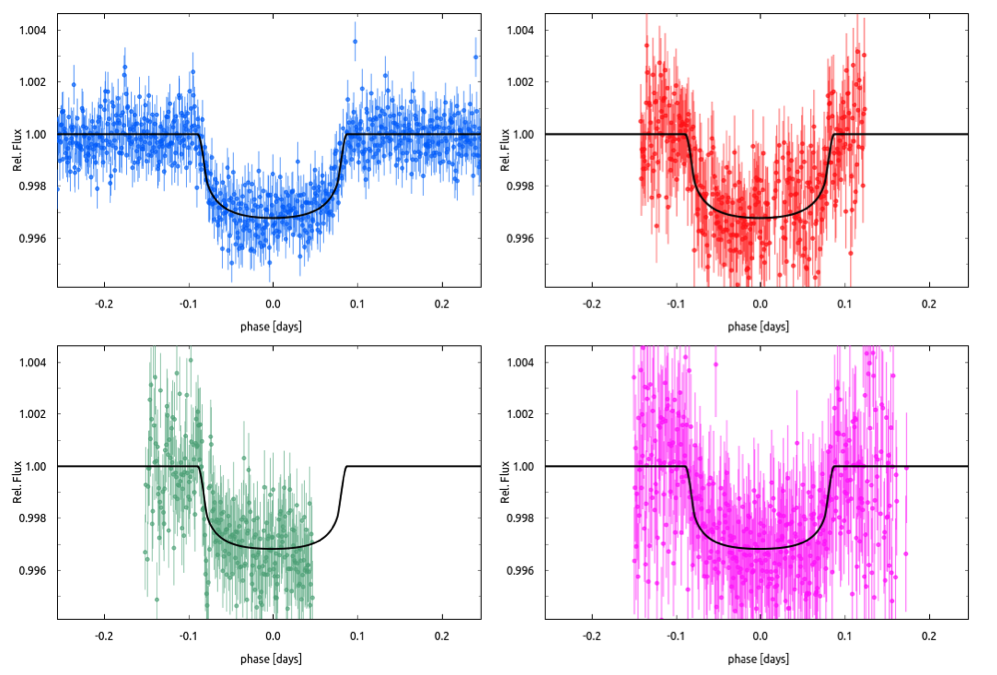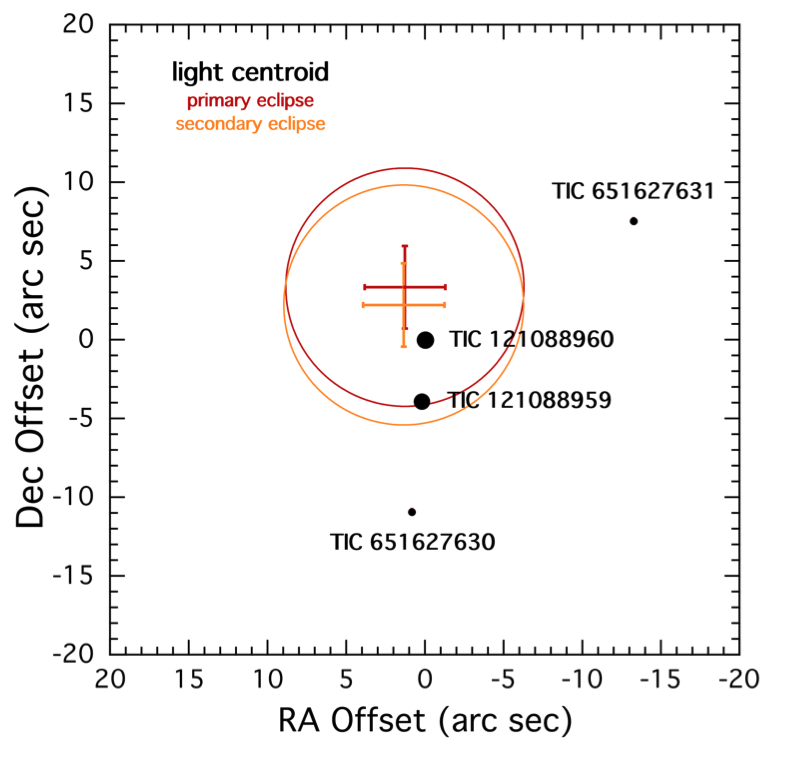STATUS UPDATE: Orbit 1 of Sector 45 is now available to download as a TICA product from MAST.
Welcome TESS followers! This week we are looking at three papers from the archive,
TOI-1842b: A Transiting Warm Saturn Undergoing Re-Inflation around an Evolving Subgiant (Wittenmyer et. al., 2021) :
TESS in addition to several additional ground based telescopes (Minerva-Australis, NRES, and the Las Cumbres Observatory Global Telescope) has identified and confirmed the presence of a warm Saturn orbiting TOI-1842. The planet, known as TOI-1842b, has a radius of 1.04 RJup, a mass of 0.214 MJup, an orbital period of 9.5739 days, a transit duration of 4.3 hrs, and a very low density of 0.252 g cm−3.
One interesting thing about the TOI-184 system is that the host star is evolving off its main sequence, as such it presents an excellent opportunity to test models of gas giant re-inflation.
A 2+1+1 quadruple star system containing the most eccentric, low-mass, short-period, eclipsing binary known (Han et. al., 2021) :
In this paper the authors discuss a 2+1+1 quadruple system that they discovered with TESS. This system contains an unresolved eclipsing binary which is part of TIC 121088960, and a close neighbor TIC 121088959. The eclipsing binary has two very low-mass M dwarf stars which are in a highly eccentric short period orbit with e = 0.709 and P = 3.04358 days.
TIC 121088959 and TIC 121088960 are separated by only 3.9", this combined with the fact that one TESS detector pixel is equivalent to 21 arcseconds on sky, meant that determining the likelihood of the eclipsing binary being part of TIC 121088960 was difficult. To do this the authors used a light centroiding analysis of the difference image between in-eclipse and out of eclipse data. This method did indeed indicate that eclipsing binary is part of TIC 121088960, but that it only contributes ∼10% of its light.
Additional facilities (iSHELL at NASA's Infrared Facility and the Coudé spectrograph at the McDonald 2.7-m telescope) were used to obtain radial velocity measurements which indicated no variation over the 11-day observation period. The radial velocity differences between the two images was measured as 8 km s-1, and similar distances and proper motions were derived from the images indicating that TIC 121088959 and TIC 121088960 are a gravitationally bound pair.
Examining Gaia's large RUWE and astrometric_excess_noise parameters for TIC 121088960 also suggested that the eclipsing binary is part of the system and that it is itself a triple star.
Through the conduction of an SED analysis the masses of all four stars were derived with the eclipsing binary stars having masses of 0.19 M⊙ and 0.14 M⊙, and the two visible 0.43 M⊙ and 0.39 M⊙, respectively.
Using numerical simulations the authors also found that the orbital period of the inner triple is likely the range of 1 to 50 years.
The Solar Neighborhood XLIX: Nine Giant Planets Orbiting Nearby K Dwarfs, and the CHIRON Spectrograph's Radial Velocity Performance (Paredes et. al., 2021) :
Three new exoplanet candidates orbiting K dwarfs have been identified by the authors as part of their K dwarf survey. A hot Jupiter from TESS was also confirmed which orbits TOI 129.
This work was conducted as part of a larger radial velocity survey of K dwarfs up to 50 pc away. The survey aimed to look for stellar, brown dwarf, and jovian planets using radial velocities from the CHIRON spectrograph on the CTIO/SMARTS 1.5m telescope. The techniques employed by the authors to find their objects of interest were confirmed via the detection of five additional known exoplanets orbiting K dwarfs. This paper presents the nine orbital solutions derived, with each system hosting an exoplanet candidate with minimum masses between 0.5 - 3.0 MJup.
This paper also presents a list of 136 nearby K dwarfs which have V-band magnitudes of 7 - 12 and radial velocity precisions between 5 - 20 ms-1.

Fig. 1: Taken from Wittenmyer et. al., (2021). Transit photometry data and model fit for TESS (blue, Sector 23), LCOGT data from SAAO (red), and CTIO (green and magenta). The transit model (black solid line) is constructed jointly with precise Doppler data as described in Sect. 4.2 of the paper.

Fig. 2: Taken from Han et. al., (2021). Light centroid for the primary eclipse (red cross) and secondary eclipse (orange cross). The locations of TIC 121088960 and TIC 121088959 are indicated as heavy filled circles on the plot. The arms on the crosses represent the ±1 − 𝜎 uncertainties on the light centroids, while the circles correspond to the 3 − 𝜎 range on the centroid locations. These demonstrate that the eclipses occur with a few arc seconds of the target stars. Specifically, the eclipses are distinctly closer to TIC 121088960 and rule against TIC 121088959 at the 2.9 𝜎 and 2.4 𝜎 level for the primary and secondary eclipses, respectively. The other two marked stars are at > 20 th magnitude.